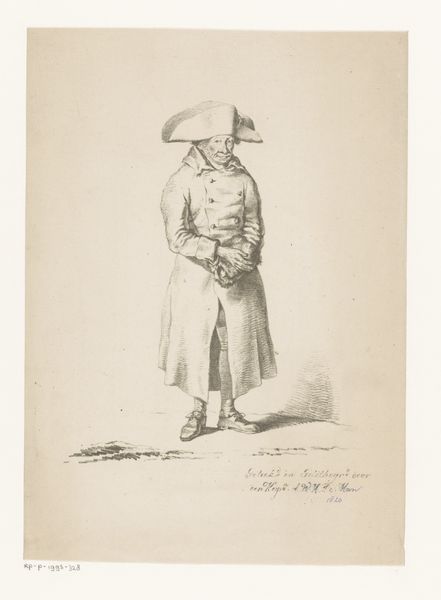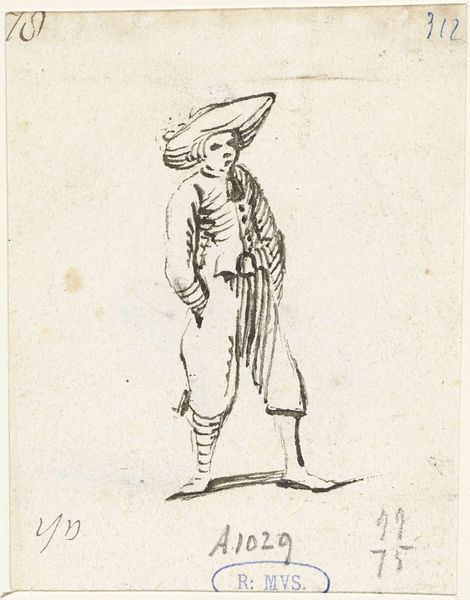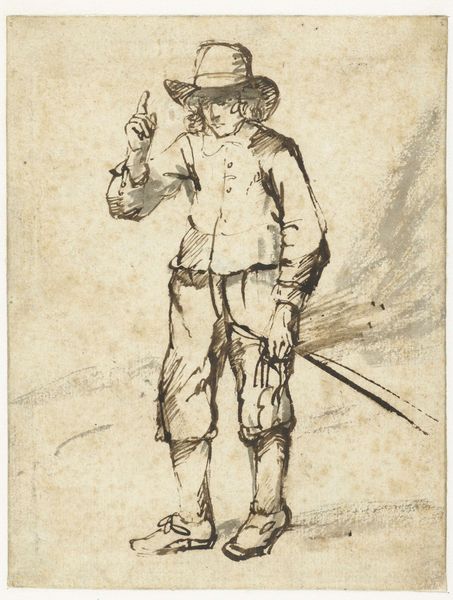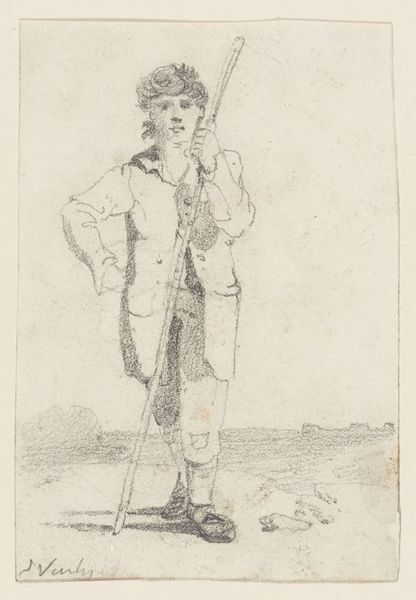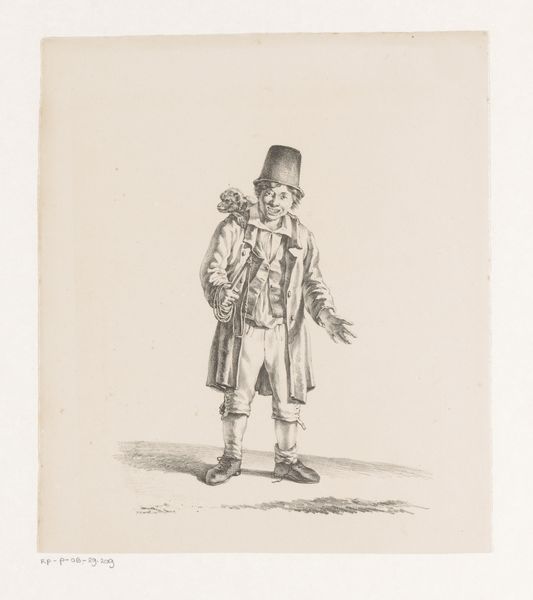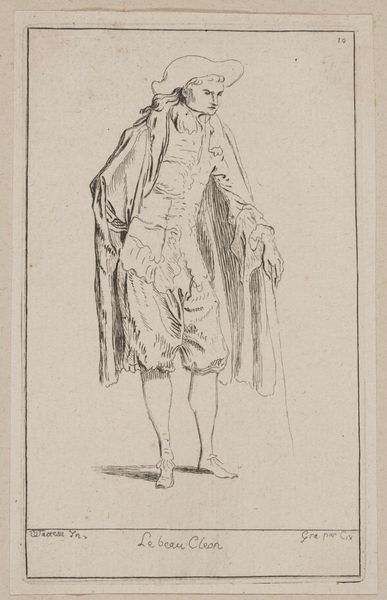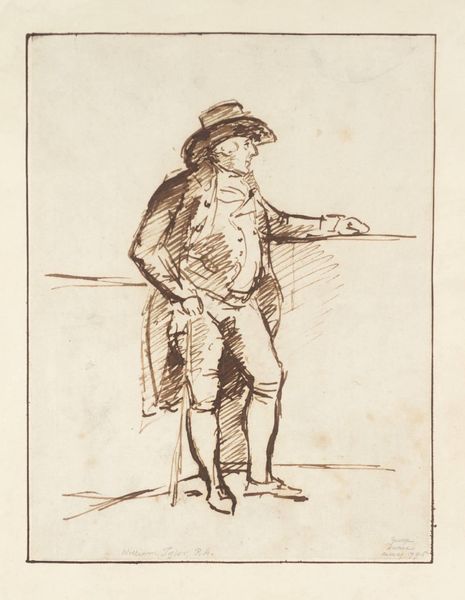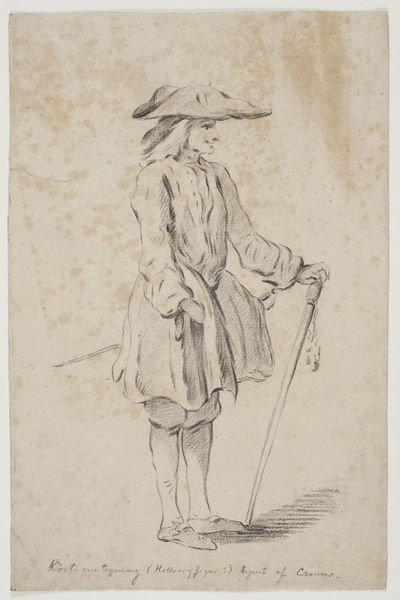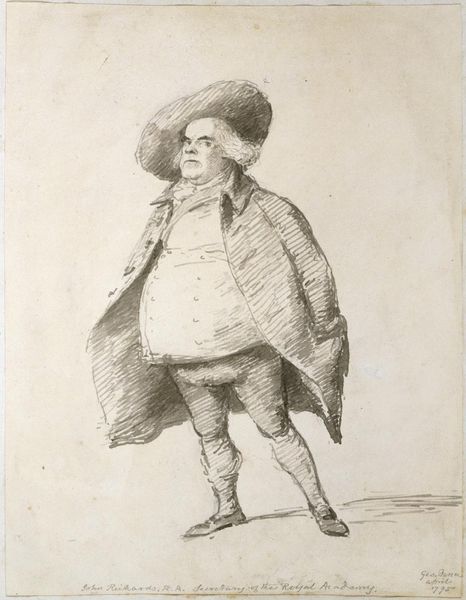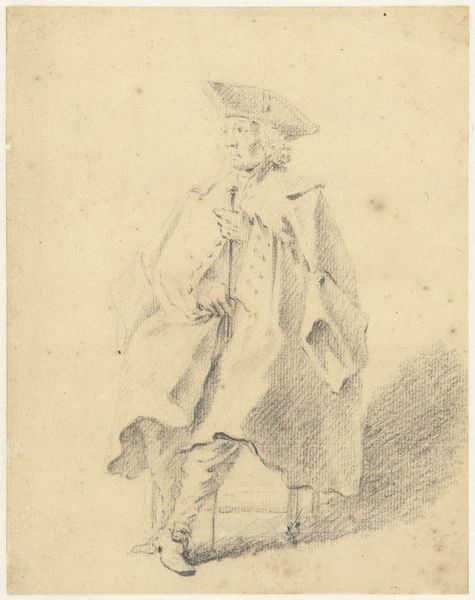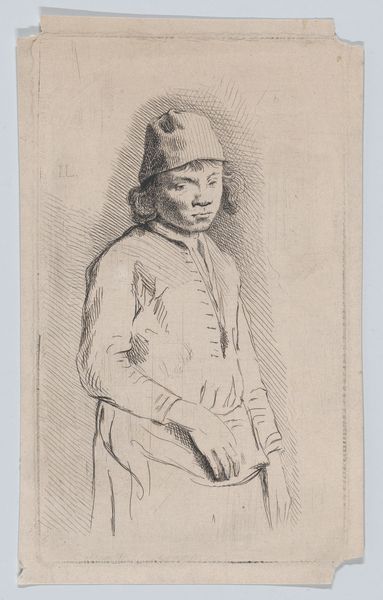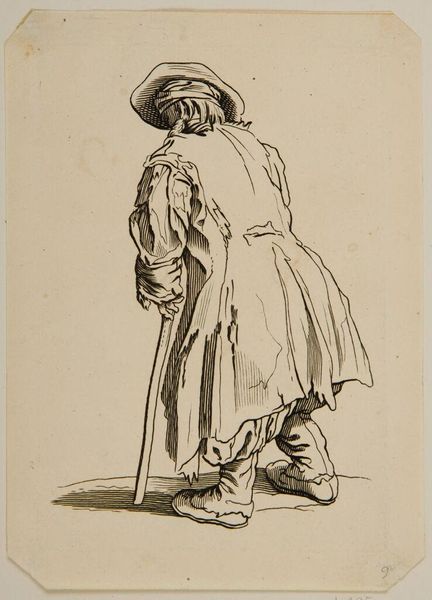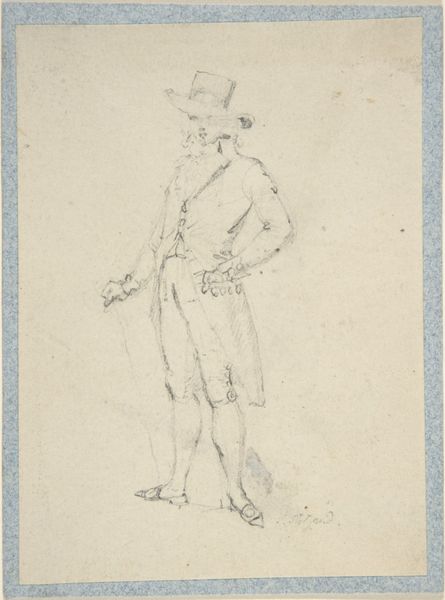
drawing, pencil
#
portrait
#
pencil drawn
#
drawing
#
pencil sketch
#
figuration
#
romanticism
#
pencil
Dimensions: height 371 mm, width 267 mm
Copyright: Rijks Museum: Open Domain
Curator: What a fascinating piece. This is Hermanus Carbentus' "Portrait of merchand Israëls" dating back to 1819. It's a pencil drawing, full of intriguing details. Editor: It strikes me immediately with its almost casual air, despite being a formal portrait. There’s a subtle vulnerability there, a contrast with the confident pose. What sort of paper and pencil do you think Carbentus would have used to create such crisp, subtle textures? Curator: Indeed, the detail achieved with just pencil is remarkable. Considering the date, he likely used a fine grain paper – perhaps a handmade linen rag – allowing for a smooth, consistent surface. And I imagine the pencil was crafted from a refined graphite source. But consider the subject too. Who *was* Israëls, and what role did merchants play in society at the time? It would be worthwhile knowing something about his context within the economic landscape of the 1800s. Editor: Good point. Understanding his place in the merchant class informs how we perceive his posture and clothing. The simplicity of the attire – is that a simple linen overcoat and tricorn hat? – suggests more than just mere representation. And his trade no doubt shaped his public identity, making him an important piece of that period’s social tapestry. Were there restrictions about what merchants were permitted to commission at that time? Curator: Precisely! It prompts questions about status, trade regulations, and artistic patronage. Carbentus might also have selected these raw, honest materials precisely *because* he wanted to convey this specific subject in relation to that role – and make some implicit social commentary on the mercantile process. Editor: It’s interesting how the visible pencil strokes add to that sense of grounded reality, rather than an idealized, grand portrayal you might have expected with wealthier patrons from that time. A material directness which suggests an implicit message of "this is me, this is who I am, this is what I do for a living." Curator: Yes. These unblended pencil marks act as both a historical record and a testament to Carbentus' direct style. Editor: The image has provided me an understanding beyond aesthetic appeal – the materials truly do provide tangible links to production and meaning, whilst considering Carbentus' context encourages me to challenge our current preconceptions of wealth.
Comments
No comments
Be the first to comment and join the conversation on the ultimate creative platform.
